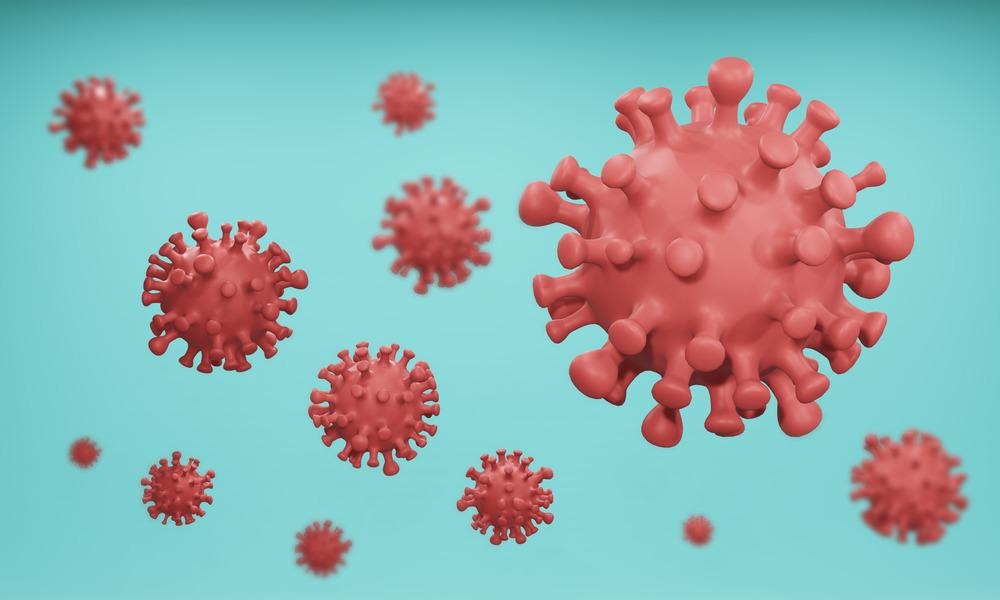In a recent Cell study, researchers characterize the structure, entry receptors, and antigenicity of the novel human coronavirus known as CCoV-HuPn-2018 spike glycoprotein. This virus has been identified as a canine-feline recombinant alphacoronavirus, thereby suggesting that zoonotic transmission of coronaviruses occurs more frequently than previously appreciated.
 Study: Structure, receptor recognition and antigenicity of the human coronavirus CCoV-HuPn-2018 spike glycoprotein. Image Credit: nawaitgraphic / Shutterstock.com
Study: Structure, receptor recognition and antigenicity of the human coronavirus CCoV-HuPn-2018 spike glycoprotein. Image Credit: nawaitgraphic / Shutterstock.com
Background
The world has experienced zoonotic transmission of three deadly beta coronaviruses from animals to humans in the last two decades. These viruses include the severe acute respiratory syndrome coronavirus (SARS-CoV), Middle East respiratory syndrome coronavirus (MERS-CoV), and SARS-CoV-2) the latter of which is responsible for the ongoing coronavirus disease 2019 (COVID-19) pandemic.
In Malaysia and the United States, viral variants that are genetically similar to canine and feline coronaviruses have been identified in patients with pneumonia and acute respiratory symptoms. In addition, CCoV-HuPn-2018, which is a novel canine-feline recombinant alphacoronavirus, has been identified in a patient with pneumonia in Malaysia. These studies suggest that zoonotic coronaviruses that have jumped from their animal hosts to humans may be associated with clinical symptoms.
In the current study, scientists characterize the spike protein structure, entry receptors, and antigenicity of the newly emerged CCoV-HuPn-2018.
Structure of CCoV-HuPn-2018 spike glycoprotein
Cryo-electron microscopic findings revealed that the spike ectodomain trimer contains an N-terminal S1 subunit and a C-terminal S2 subunit. The S1 subunit is divided into domain 0 and domains A-D, whereas the S2 unit consists of fusion machinery.
Further analysis revealed that the spike protein exists in two distinct conformations. In one conformation, domain 0 was swung out at the periphery of the trimer and thus referred to as the “swung out” conformation. In the other “proximal” conformation, the domain was oriented toward the viral membrane.
Dense distribution of oligosaccharides was observed in both spike subunits. The S1 subunit of CCoV-HuPn-2018 was structurally similar to both HCoV-NL63 and HCoV-229E. In contrast, the S2 subunit of CCoV-HuPn-2018 was structurally similar to the porcine epidemic diarrhea virus (PEDV) and feline infectious peritonitis virus (FIPV). These observations indicate that the CCoV-HuPn-2018 spike protein might have emerged from a genetic recombination event.
Similar to both type II feline and canine coronaviruses, no polybasic furin cleavage site was observed at the S1/S2 junction of the CCoV-HuPn-2018 spike protein. However, a polybasic motif was identified in the S2 site, which may be associated with its cleavage and viral infectivity.
Viral entry mechanism
The host cell entry mechanism of CCoV-HuPn-2018 was revealed using human erythrocytes. This in vitro analysis demonstrated that domain 0 mediates the virus-host cell attachment process in a sialic acid-dependent manner during viral entry. Aminopeptidase N was identified as a specific receptor responsible for CCoV-HuPn-2018 entry.
The CCoV-HuPn-2018 spike protein was found to interact with canine, feline, and porcine aminopeptidase N orthologs to mediate host cell entry. However, no interaction was observed between the CCoV-HuPn-2018 spike and the human aminopeptidase N orthologue.
This could be due to the absence of an N-linked oligosaccharide at position N739 in human aminopeptidase N. The introduction of an oligosaccharide at position N739 of human aminopeptidase N restored its interaction with the CCoV-HuPn-2018 spike protein.
Taken together, these observations indicate that several aminopeptidase orthologs serve as entry receptors for CCoV-HuPn-2018 and that the presence of a glycan at position N739 is crucial for viral entry processes. Thus, single nucleotide polymorphisms might be responsible for the induction of CCoV-HuPn-2018 infection in humans.
Spike antigenicity
The antigenicity of CCoV-HuPn-2018 was determined by assessing the cross-neutralizing ability of endemic alphacoronavirus-infected human plasma. The findings revealed that polyclonal antibodies induced by previous alphacoronavirus exposure can cross-neutralize CCoV-HuPn-2018, although with reduced potency.
Furthermore, a porcine coronavirus monoclonal antibody was found to efficiently prevent the CCoV-HuPn-2018 spike-mediated host cell entry by inhibiting the interaction between the CCoV-HuPn-2018 spike protein and aminopeptidase N receptor. This finding indicates that the porcine coronavirus monoclonal antibody may be used as a therapeutic intervention against CCoV-HuPn-2018 infection.
Conclusions
The current study highlights that animal-to-human spillover of coronaviruses may occur more frequently than previously appreciated. The study findings also emphasize the importance of performing the structural and functional characterization of zoonotic pathogens for the development of effective therapeutics and vaccines.